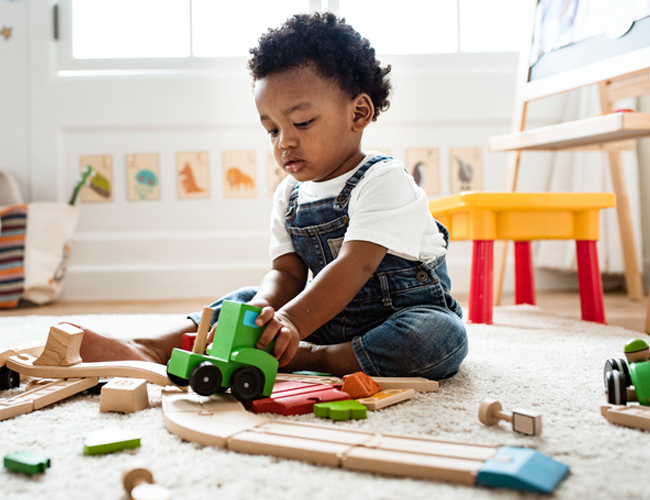Common choking hazards to watch out for
Prevent the risk of choking by avoiding these hazards and being prepared for emergencies.
Choking can happen to anyone at any time, but you can take some of the stress out of a near-choking situation by preparing yourself for it: child-proof your home, and take an infant CPR and first aid course (together with your child’s primary caregiver).
Toys and small objects that are choking hazards
Choking hazards exist on your baby’s plate, in their playroom and just about every room in your house, and when you step outside. The bad news: they’re everywhere. The good news is, if you’re aware of them, you can create a safer space for your little one.
Look out for small objects, like:
- Coins, safety pins, paperclips, bottle caps
- Hardware like nails and screws
- Toys with small parts that are not suitable for your baby’s age
- Jewellery (earrings, rings, etc.)
- Stones
Make sure everyone in your home, including older kids, knows what could be a choking hazard. Always follow the age recommendations on toys, and check toys and stuffed animals for loose parts before handing them to your child. Pack any household objects safely out of their reach when not in use. Check the floor by getting down to your baby’s height and looking around.
Sure, we can’t catch everything they put in their mouths, but supervision is key: if you notice difficulty breathing, take action.
Foods to watch out for
When starting your little one on solids, it’s important to stick to age-appropriate foods and follow the guidelines of a paediatrician.
These are some of the top food hazards:
- Hard, raw vegetables like carrots
- Hard fruits like apples
- Fruits and veg in a small, round shape (grapes, blueberries, raisins)
- Foods with seeds or pips, like watermelons, plums, peaches, cherries and olives (deseed or de-pit them first)
- Nut butters that are too-thickly spread
- Fish with bones
- Whole mini sausages
- Popcorn, and small, hard sweets
How to prepare food
The preparation method to follow depends on your child’s age. A general rule to go by is to avoid foods that are hard, sticky or too small as these naturally pose a choking risk for babies and toddlers who are still learning how to properly chew their food.
If ever you’re unsure, cut or slice the food small or thinner, and cook it just a little longer to be safe.
Best ways to feed your baby
Creating a safe eating environment is important. Before mealtimes, sit them upright in their high chair, preferably, or on a seat with a backrest. It’s advised to avoid feeding your baby while they’re in a carseat or a stroller.
When your child is being fed, they need to be supervised. Hold off on anything that requires your attention until after your baby has eaten. The same goes for them: no moving around, playing with toys or reading books. If your child is crying or laughing, wait for them to calm down before offering them food. The idea is to show them that mealtimes should be relaxed, and to eat slowly and chew thoroughly.
Is gagging normal?
Yes, it is, and you should allow your baby to gag as this reflex keeps food from reaching their windpipe. Try not to panic; instead, stay calm and assess your baby’s reactions.
If your baby has trouble breathing, lean them forward and give their back a firm blow with your palm to help dislodge the food item. Remember; if your child sees you stressing, they’re more likely to start panicking, too. Note that the Heimlich manoeuvre should only be performed on children 12 months and older.
When to contact a medical professional
If an infant is choking call your local emergency number while you begin first aid.
Always call your doctor after a child has been choking, even if you successfully remove the object from the airway and the infant seems fine.

